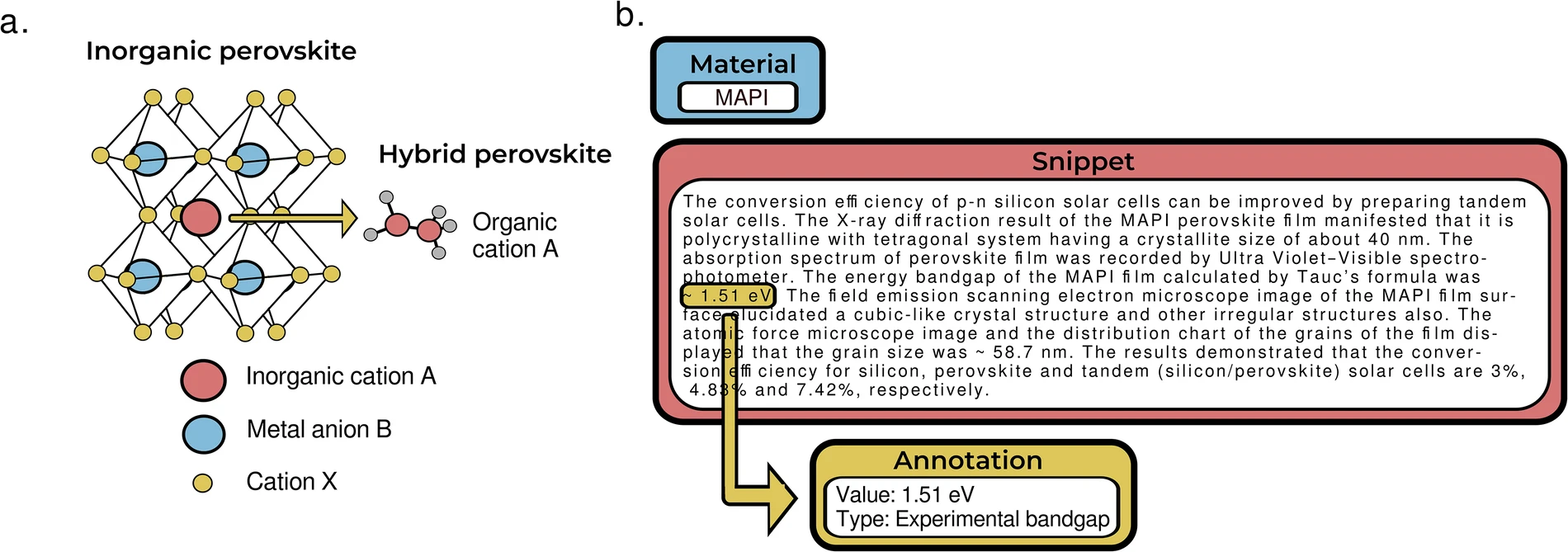PV600: A Landmark Annotated Dataset for Perovskite Bandgap Extraction

In the fast-paced world of materials science, the volume of published research is growing exponentially, bringing both opportunities and challenges for researchers seeking to leverage this wealth of knowledge. One particularly promising path forward lies in Natural Language Processing (NLP) and Information Extraction (IE)—methods that can sift through vast bodies of text to identify valuable experimental and theoretical data. However, to accurately benchmark and improve these tools, high-quality, manually annotated datasets are essential.
Enter PV600—a groundbreaking dataset specifically tailored for extracting perovskite bandgap values from the scientific literature. Developed by a team from the University of Turku, PV600 addresses a long-standing gap in materials science resources by offering the first publicly available, expertly annotated dataset focusing exclusively on perovskite bandgaps. This resource is poised to accelerate data-driven discoveries in photovoltaics and beyond.
Why Perovskites and Bandgaps Matter
Perovskites, defined by their characteristic ABX3 crystal structure, have captured global attention due to their exceptional optoelectronic and photovoltaic properties. They are highly tunable—changing the constituent elements can dramatically alter their performance in solar cells, LEDs, sensors, and photodetectors. The bandgap of a perovskite material is a critical parameter: it determines the range of light wavelengths a material can absorb and thus influences its power conversion efficiency. Optimizing bandgap values is essential for pushing solar cell performance closer to theoretical limits.
What Makes PV600 Unique
Unlike general-purpose datasets, PV600 is laser-focused on perovskite bandgaps. It consists of 600 text snippets extracted from a large corpus of open-access research articles, covering five well-studied inorganic and hybrid perovskites: MAPI, FAPI, MAPB, CsPbI3, and CsPbBr3. Each snippet was manually annotated by domain experts to identify bandgap values and classify their source as:
- Experimental
- Computational
- From literature
- Unknown
This meticulous process ensures the dataset can serve as a gold standard for testing and refining IE tools. It also helps evaluate how well different models can handle real-world complexities, such as varying terminologies, data formats, and contextual clues.
Testing AI and NLP Models
To demonstrate PV600’s utility, the researchers evaluated multiple IE approaches, including:
- ChemDataExtractor 2 (CDE2) – a rule-based method
- QA-MatSciBERT – a question-answering model tailored to materials science
- Four general-purpose Large Language Models (LLMs) – including GPT-4o and open-source alternatives like Mixtral and Llama
The team experimented with three testing strategies: IE without preselection, IE with preselection using the same model, and IE with preselection by the best-performing model. Results revealed that preselection significantly boosts accuracy—but only if performed by a high-precision model like GPT-4o, which achieved an F1-score exceeding 81%.
Key Insights from PV600
Analysis of the dataset revealed several noteworthy trends:
- CsPbI3 had the highest proportion of recorded bandgap values (27.3%).
- Most bandgap values of “unknown” origin actually reflect missing or ambiguous context in literature.
- Experimental values tended to show tighter agreement than computational ones, which varied widely depending on simulation methods.
- Over time, the number of reported bandgap values has steadily increased, reflecting both the surge in perovskite research and the growth of open-access publishing.
Why This Matters for Materials Science
The PV600 dataset is more than just a compilation of numbers—it’s a research enabler. By providing a reliable, high-quality benchmark, it supports the development of better NLP tools for mining materials science literature. This, in turn, accelerates the discovery of new materials, optimizes device performance, and facilitates reproducible, data-driven science.
Given the rapid evolution of AI, datasets like PV600 will play an increasingly vital role in bridging the gap between human expertise and automated information extraction. For perovskites—materials already revolutionizing solar energy—this could mean reaching efficiency milestones much sooner than expected.
Read the full research article here: https://www.nature.com/articles/s41597-025-05637-x
Sponsored by PWmat (Lonxun Quantum) – a leader in GPU-accelerated materials simulation software for next-generation quantum, energy, and semiconductor R&D. Discover our cutting-edge solutions at: https://www.pwmat.com/en
📘 Download our brochure to explore advanced features, powerful simulation capabilities, and success stories: PWmat PDF Brochure
🎁 Try our software for free! Fill out our quick form to request a trial license and receive tailored technical information: Request a Free Trial
📞 Phone: +86 400-618-6006
📧 Email: support@pwmat.com
#Perovskite #Bandgap #MaterialsScience #PV600 #DataMining #MachineLearning #NLP #InformationExtraction #SolarCells #QuantumServerNetworks #PWmat

Comments
Post a Comment